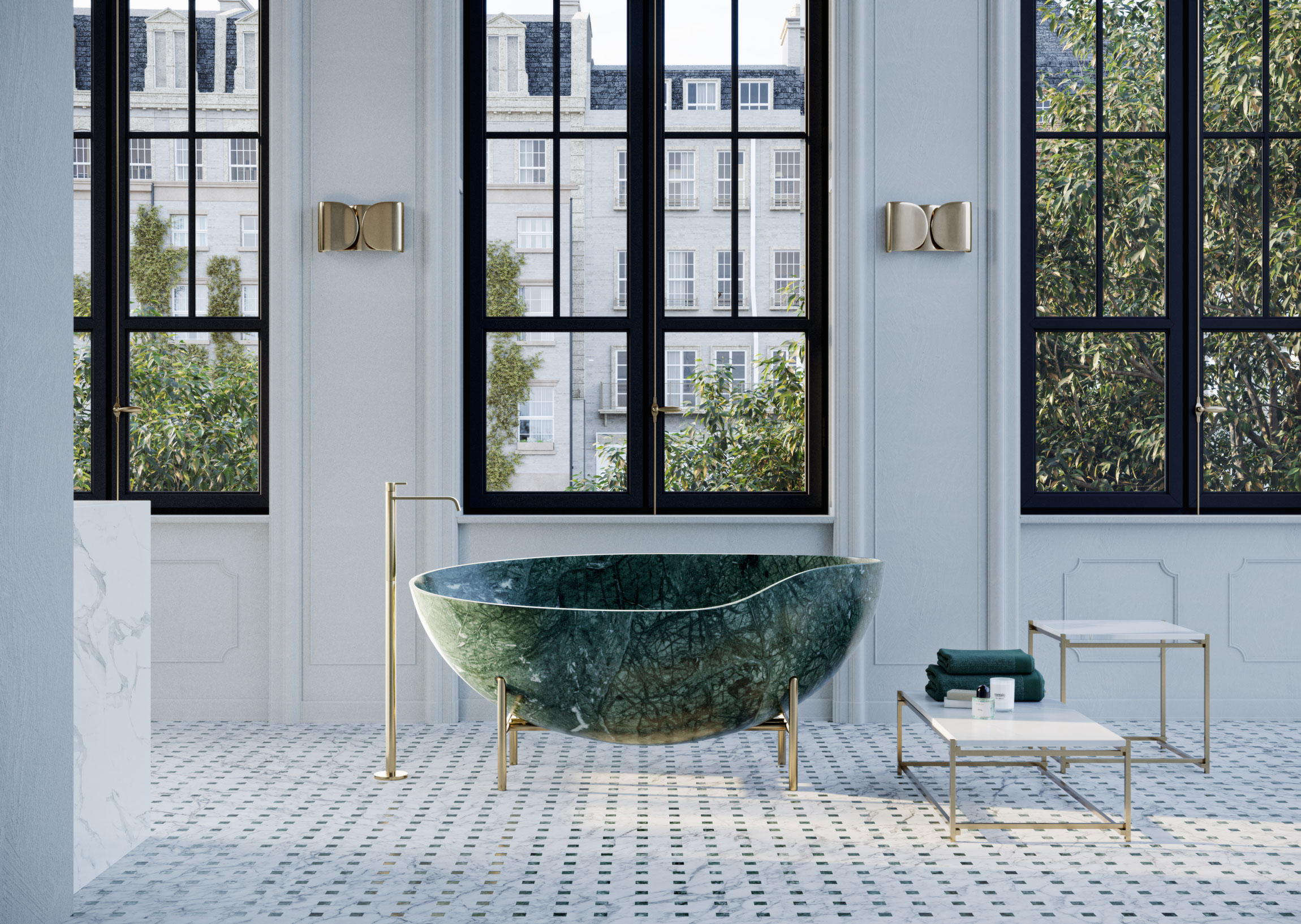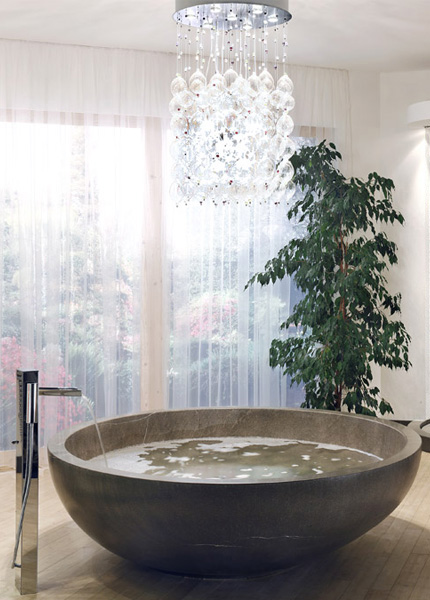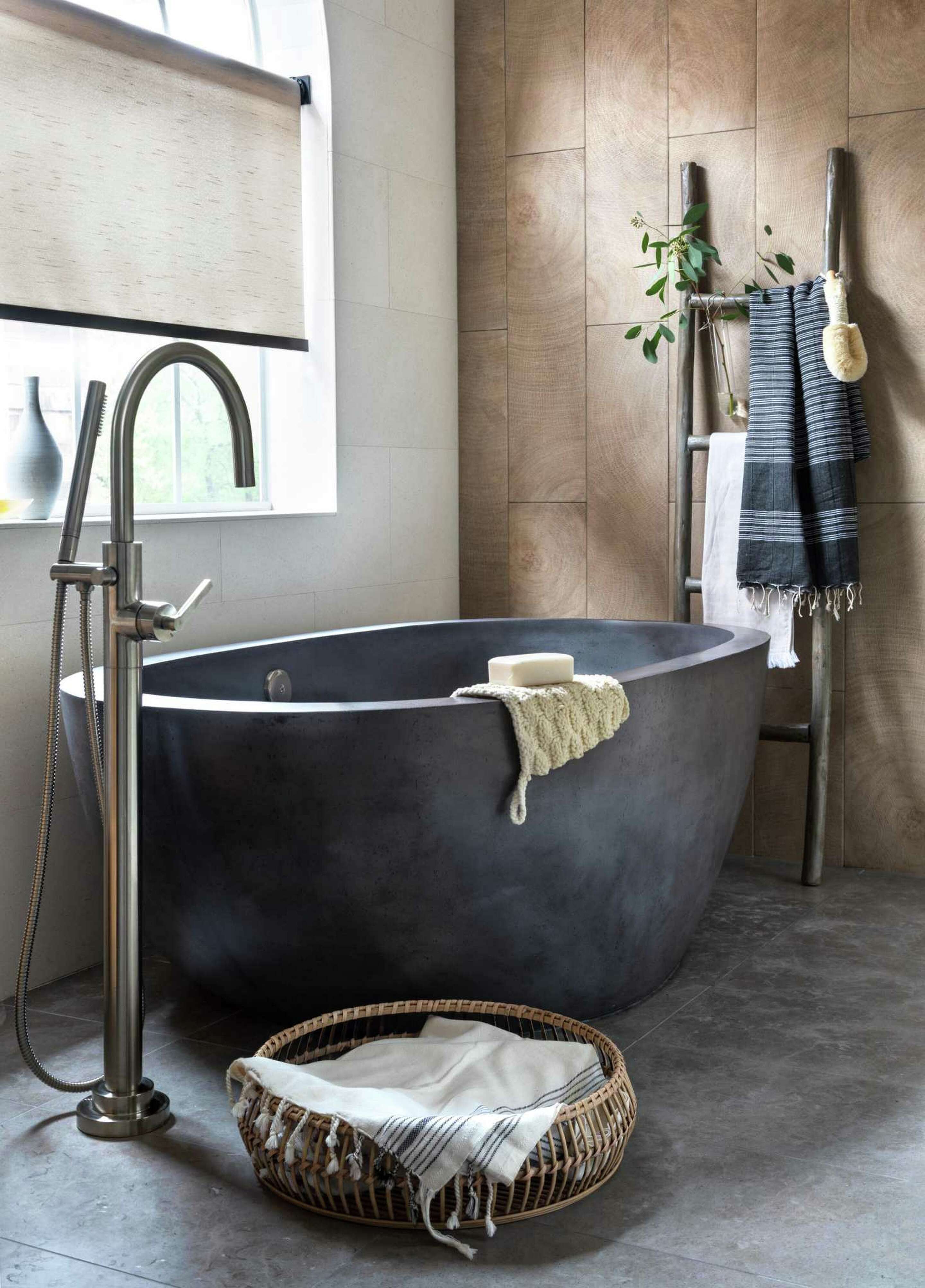Discover the serenity of Japanese soaking tubs - from their history to installation tips. Dive into ultimate relaxation at home!
Have you ever heard of a Japanese soaking tub? If not, you're in for a treat. Japanese soaking tubs, also known as ofuros, are a traditional way of bathing that has been enjoyed in Japan for centuries. They are characterized by their simple design, their large size, and their use of natural materials.

Source: westonebathrooms
Japanese Ofuro soaking tub are typically made of wood, such as hinoki cypress, which has a number of beneficial properties. Hinoki cypress is known for its antibacterial and antifungal properties, which can help to keep the tub clean and free of germs. It is also said to have a calming and relaxing scent.
Ofuros are typically filled with warm water, and they are often used for bathing before or after a massage. They can also be used for simply relaxing and soaking away the stresses of the day.
If you're looking for a way to add a touch of Japanese elegance and relaxation to your home, a Japanese soaking tub is a great option. In this article, we will take a closer look at Japanese soaking tubs, including their history, benefits, and how to choose the right one for you.
The history of Japanese soaking tubs dates back centuries. The earliest evidence of ofuros can be found in the Yayoi period (300 BC - 300 AD), when they were used by the Japanese nobility. These early ofuros were made of wood and were typically quite small.
In the Edo period (1603 - 1868), ofuros became more common among the general population. This was due in part to the development of sento, or public bathhouses, where people could go to bathe. Sento typically had ofuros, and this helped to popularize the practice of soaking.

(Freestanding Stone Soaking Tub)
In the Meiji period (1868 - 1912), ofuros began to be made from other materials, such as concrete and metal. This made them more affordable and accessible to people of all social classes.
Today, ofuros are still popular in Japan. They are often found in homes, hotels, and spas. They are also becoming increasingly popular in other parts of the world, as people discover the many benefits of soaking in a Japanese soaking tub
Japanese soaking tubs outdoor are characterized by their simple design, their large size, and their use of natural materials. Here are some of the key characteristics of Japanese soaking tubs:
Japanese soaking tubs are typically larger than Western bathtubs. This is because they are designed for soaking, not for bathing. The average Japanese soaking tub is about 6 feet long and 3 feet wide.
Japanese soaking tubs are also deeper than Western bathtubs. This is to allow the bather to fully immerse themselves in the water. The average Japanese soaking tub is about 2 feet deep.
Japanese soaking tubs are typically made of natural materials, such as wood, stone, or copper. Wood is the most common material, and hinoki cypress is the preferred type of wood. Hinoki cypress is known for its antibacterial and antifungal properties, which can help to keep the tub clean and free of germs.
Japanese soaking tubs are typically simple in design. They often have a rectangular or square shape, and they may have a built-in seat. Some Japanese soaking tubs have a lid, which can be used to keep the water warm
Freestanding Japanese soaking tubs offer a number of benefits, both physical and mental. Here are some of the key benefits of soaking in a Japanese soaking tub:
Soaking in a warm bath can help to relax the muscles and relieve stress. The warm water helps to loosen tight muscles and joints, and the weight of the water helps to take pressure off the body. The shape of a Japanese soaking tub especially helps to achieve this, as you can sit in a japanese bathtub, this helps you not only relax your mind but your body.
Soaking in warm water can help to improve circulation. The warm water helps to dilate the blood vessels, which increases blood flow throughout the body. This can help to improve oxygen delivery to the tissues and organs, and it can also help to reduce inflammation.

Soaking in warm water can help to boost the immune system. The warm water helps to kill bacteria and viruses, and it can also help to stimulate the production of white blood cells.
Soaking in warm water can help to improve skin health. The warm water helps to open the pores and remove dirt and oil from the skin. It can also help to exfoliate the skin and remove dead skin cells.
Soaking in warm water can help to relieve pain from conditions such as arthritis, muscle pain, and menstrual cramps. The warm water helps to relax the muscles and reduce inflammation.
Soaking in warm water can help to relieve stress and promote relaxation. The warm water helps to calm the mind and body, and it can also help to improve sleep quality.
The installation and placement of a Japanese soaking tub will vary depending on the type of tub you choose and the space you have available. Here are some general considerations:
Japanese soaking tubs can be installed indoors or outdoors. If you are installing an indoor tub, you will need to make sure that the space is large enough to accommodate the tub and any plumbing or electrical work that needs to be done. If you are installing an outdoor tub, you will need to make sure that the tub is in a location that is protected from the elements.

(Chiseled Outside With Polished Inside Round Stone Tub)
Japanese soaking tubs are typically larger than Western bathtubs, so you will need to make sure that you have enough space for the tub and any surrounding furniture. The average Japanese soaking tub is about 6 feet long and 3 feet wide, so you will need to make sure that you have at least 10 feet of clearance in all directions.
If you are installing an indoor tub, you will need to make sure that the plumbing and electrical work is done properly. You will also need to install a drain for the tub.
The location of the tub is important. You will want to choose a location that is both relaxing and convenient. The tub should be in a quiet area where you can relax and unwind. It should also be close to a water source and a drain.
Japanese ofuro soaking tubs can be made from a variety of materials, including wood, copper, natural stone, and acrylic. Each material has its own unique properties and benefits.
Wood is the traditional material for Japanese soaking tubs. It is known for its natural beauty, its antibacterial properties, and its ability to retain heat. Hinoki cypress is the most popular type of wood for Japanese soaking tubs. It is a softwood that has a pleasant fragrance and is known for its durability.
Copper is another popular material for Japanese soaking tubs. It is known for its antibacterial properties, its ability to resist rust, and its ability to promote relaxation. Copper is also a good conductor of heat, which means that it can help to keep the water in the tub warm.
Natural stone is a luxurious and elegant material that can add a touch of sophistication to any bathroom. Marble is the most popular type of natural stone for Japanese soaking tubs. It is a hard stone that is known for its beauty and its ability to retain heat.
Acrylic is a modern material that is often used for Japanese soaking tubs for sale. It is lightweight, easy to clean, and relatively inexpensive. Acrylic is also a good insulator, which means that it can help to keep the water in the tub warm.
The type of material you choose for your Japanese soaking tub will depend on your personal preferences and budget. If you are looking for a traditional and luxurious option, wood or marble is a good choice. If you are looking for a modern and affordable option, acrylic is a good choice.
Japanese soaking tubs require regular maintenance and care to keep them clean and in good condition. Here are some tips for maintaining and caring for your Japanese soaking tub:
Clean the tub after each use. This will help to prevent the growth of mold and mildew. Use a mild soap and water solution and a soft cloth to clean the tub.
Drain the tub after each use. This will help to prevent the water from becoming stagnant and foul-smelling.

(White Forest Marble Round Bath Tub)
Scrub the tub regularly. This will help to remove any hard water deposits or soap scum. Use a mild abrasive cleaner and a soft cloth to scrub the tub.
Condition the tub regularly. This will help to protect the tub from the elements and keep it looking its best. Use a conditioner specifically designed for Japanese soaking tubs.
Have the tub professionally cleaned and serviced every few years. This will help to remove any deep-seated dirt or grime and ensure that the tub is in good working order
The cost of a Japanese soaking tub will vary depending on the type of tub you choose, the size of the tub, and the materials used. Wood tubs are typically the most expensive, while acrylic tubs are the most affordable.
The cost of installation will also vary depending on the type of tub you choose and the complexity of the installation.
If you are on a budget, there are a few things you can do to save money on a Japanese soaking tub. You can choose a smaller tub, a less expensive material, or do the installation yourself.
You can also contact Classybaths for Natural stone Japanese soaking tubs. Classybaths offers a wide variety of Japanese soaking tubs at a variety of price points. They also offer customization options, so you can create the perfect tub for your needs.
To learn more about Japanese soaking tubs or to place an order, please contact Classybaths today
Japanese soaking tubs are typically larger than Western bathtubs, so you will need to make sure that you have enough space for the tub and any surrounding furniture. The average Japanese soaking tub is about 6 feet long and 3 feet wide, so you will need to make sure that you have at least 10 feet of clearance in all directions.

Source: houstonchronicle
The best material for a Round Japanese soaking tub depends on your personal preferences and budget. Wood is the traditional material, but it can be more expensive than other materials. Copper is another popular option, as it is known for its antibacterial properties. Natural stone is a luxurious and elegant material, but it can be quite expensive. Acrylic is a modern and affordable option.
The cost of installing a Japanese soaking tub will vary depending on the type of tub you choose, the size of the tub, and the complexity of the installation. In general, expect to pay between $1,000 and $5,000 for installation.
Yes, Japanese soaking tubs are safe when used properly. However, it is important to follow the manufacturer's instructions and to take precautions to prevent accidents. For example, it is important to never leave a child unattended in a Japanese soaking tub.
Whether or not a Japanese soaking tub is worth the investment is a personal decision. There are many factors to consider, such as your budget, your needs, and your lifestyle. However, if you are looking for a way to relax and de-stress, a Japanese soaking tub can be a great option.
If you are considering adding a to your home, Classybaths is a great place to start. Classybaths is a natural stone product manufacturer specializing in making custom products such as Japanese soaking tubs. They have a reputation for making high-quality products, excellent customer service, and out-of-this-world craftsmanship.

(Black Marble Japanese Soaking Tub)
Classybaths has Japanese soaking tubs for sale and are available for any inquiries about any marble project. They can help you choose the right tub for your needs and budget, and they will work with you to create the perfect tub for your home.
To learn more about Japanese soaking tubs or to place an order, please contact Classybaths today